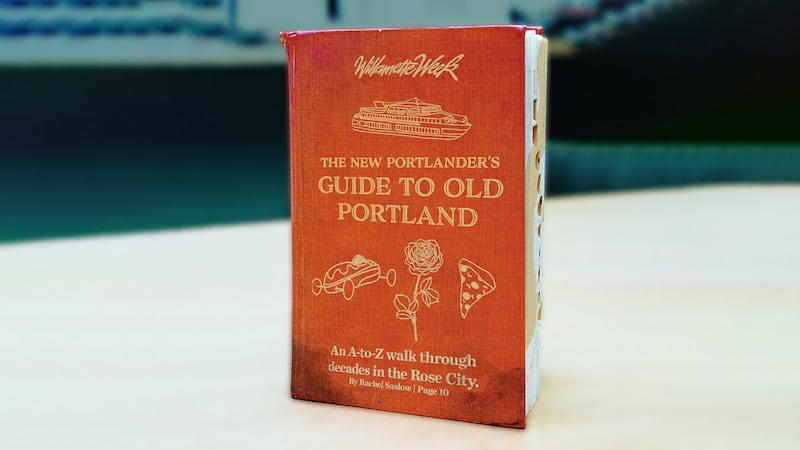In 2003, Chuck Palahniuk wrote a memoir-slash-travel guide to Portland called Fugitives and Refugees. It begins in Geek Love author Katherine Dunn’s apartment, where she rolls cigarettes and explains her theory that everyone looking to make a new life migrates west.
“Once there, the cheapest city where they can live is Portland,” Palahniuk wrote. “It gives us the most cracked of the crackpots. The misfits among misfits.”
With Portland’s median house price teetering over half a million dollars, people with wanderlust in 2024 could probably find cheaper digs elsewhere. (Though Portland still boasts a cheaper cost-of-living index than other major West Coast cities like Seattle, San Francisco, Los Angeles and San Diego.)
Misfits and crackpots? Sure. But there are plenty of folks high on tech money moving to New Portland so they can, comparatively, live like kings. The “quirkiest” thing they might’ve done lately is opt for the red Tesla instead of the classic pearl white.
Here, they join those of us who were lucky enough to be born in this mossy forest, before it had the luster of silicon.
After a spirited newsroom debate (and consulting a 2015 poll of WW staffers), we are defining Old Portland as being born on Jan. 2, 1985, and dying on Jan. 21, 2011—1985 being the year legendary “Expose Yourself to Art” Mayor Bud Clark rode a bicycle to his inauguration. And 2011? That’s when Fred Armisen and Carrie Brownstein’s Portlandia debuted. Put a bird on it, and then a burial shroud.
But Old Portland’s not just an age, it’s a whole vibe. It’s weird, it’s small, it’s a little sleazy. It’s feeling competitive with Seattle, and surprised when anyone east of the Continental Divide thinks of Oregon, not Maine, when you say you’re from Portland. It’s a faded red-and-black Blazers tattoo, it’s eating jojos from the hot case at Freddy’s, it’s saying “pop” instead of “soda” and “filberts” instead of “hazelnuts.” It’s those summers when it rained until the Fourth of July and climbed over 100 degrees only once in a very strange while.
Palahniuk published Fugitives and Refugees squarely in the era of Old Portland. The book includes a chapter called “Talk the Talk: A Portland Vocabulary Lesson.” In homage to his work, we’ve written an updated version of an A-to-Z Guide to Old Portland.
This dictionary is not meant to be all-inclusive so don’t @ us because your favorite haunt didn’t make the cut. Actually, go for it. We’re feeling nostalgic. —Rachel Saslow, Arts & Culture reporter
A Is For...
Avalon Theatre: A century-old nickel arcade on Southeast Belmont Street at 35th Avenue, now operated by the local chain Wunderland. Still available: discounted movies, nickel games and Icees with complimentary brain freezes.
Annie’s Donuts: Before Voodoo or Blue Star or Coco came to town, Annie’s was slinging old-fashioned favorites in Roseway. (Note: It’s still in fact slinging.)
Benson Bubblers: Iconic four-prong bronze drinking fountains originally donated to the city by timber baron Simon Benson. The Portland Water Bureau maintains 52 Benson Bubblers around town, plus 74 of the less-glam one-bowl variety.
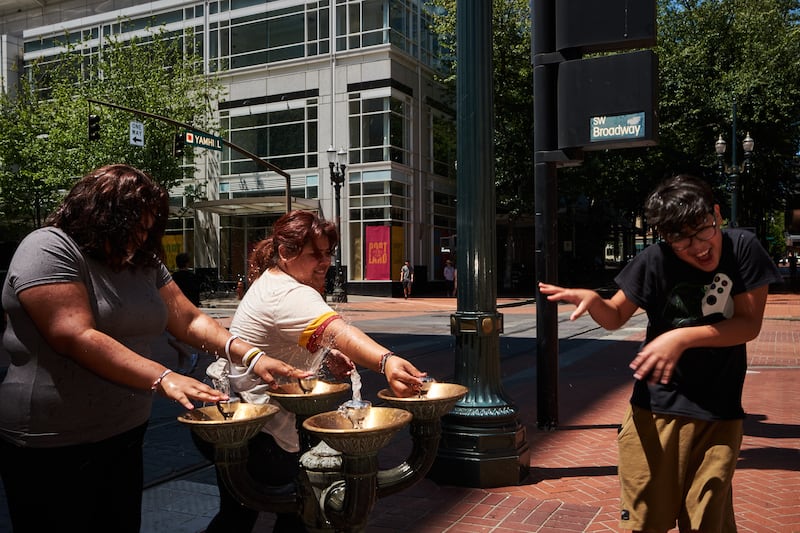
Big Pink: What everyone calls the U.S. Bancorp Tower, a 42-story skyscraper on the north end of downtown. The rosy hue comes from pink granite from Spain and copper-and-silver-coated glass windows. The 30th floor contains Portland City Grill where diners can enjoy Asian fusion cuisine along with a killer view.
Cock Rock: Naughty nickname for Rooster Rock State Park (especially the clothing-optional portion), a beach located 20 miles east of Portland in the Columbia River Gorge.
Couch Street: Pronounced “kooch,” not “couch” as in sofa. The street and the Northwest Portland park are named after sea captain John Heard Couch, whose Cornish heritage dictated the unusual pronunciation that is now used to brattily correct newbies.
Dean’s Beauty Salon & Barber Shop: Oldest family-owned, African American salon and barbershop in the state, established in 1956 in Albina. Added to the National Register of Historic Places in 2022.
Dockside Saloon & Restaurant: Nautical-themed restaurant on Northwest Front Avenue with a famous dumpster. In 1994, the owner found bags of trash containing incriminating evidence of figure skater Tonya Harding’s ties to the knee-clubbing attack on rival skater Nancy Kerrigan.
Elvis: (see here)
Fryer Tuck: (see here)
The Grotto: An outdoor shrine and garden in Northeast Portland, officially named the National Sanctuary of Our Sorrowful Mother. Visitors flock to the Christmas Festival of Lights, when the garden sets up thousands of colorful string lights, choral performances and a Nativity scene at the base of a 110-foot cliff.
Hippo Hardware: Eclectic hardware store on East Burnside Street established in 1976 that specializes in unique hardware, lighting, architecture and plumbing fixtures. Also famous for the scene in the 2002 film Jackass: The Movie in which a cast member took a dump in one of the toilets for sale.
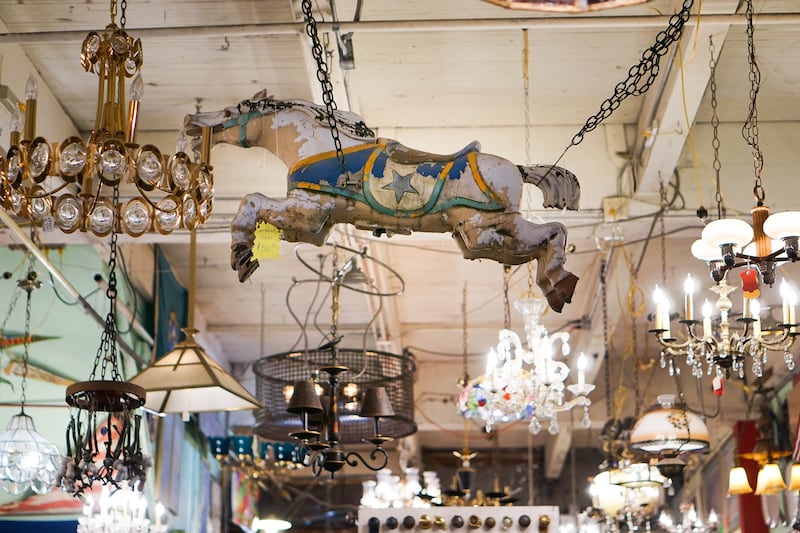
Irvington Club: Tennis club established in 1898 in the tony Northeast Portland neighborhood. In the news last month for a battle with a neighbor over noise from its two outdoor pickleball courts.
Jack Shacks: Stretch of lingerie modeling businesses on 82nd Avenue. That’s probably enough said.
jojos: Thick potato wedges seasoned and fried, best when eaten straight from the hot case at a grocery store or mini-mart.
Karaoke From Hell: Portland’s original live karaoke band, founded in 1992 and starring Voodoo Doughnut co-founder Tres Shannon. Dante’s customers have been able to live out their rock-star fantasies every Monday night for the past 20 years with Karaoke From Hell and their catalog of over 700 songs (long on classic rock but always updating with new hits by Miley Cyrus, Taylor Swift, Bruno Mars, et al.).
Laurelthirst Public House: Portland’s longest-running independent music venue. Established in 1988 at 2958 NE Glisan St. (pronounced GLEE-sun; see Couch Street), Laurelthirst is a longtime home for Portland’s bluegrass and folk music communities, with live shows every day of the week.
Lincoln High School: Downtown high school that is arguably the crown jewel of Portland Public Schools’ grade 9-12 education, with its International Baccalaureate program, formidable Constitution team, and list of notable alumni. The Simpsons creator Matt Groening went there, as did painter Mark Rothko, Bikini Kill’s Kathleen Hanna, Elliott Smith, and Mayor Ted Wheeler.
Mary’s Club: The oldest strip club in a town with a lot of strip clubs, Mary’s Club is now located at 503 W Burnside St., just two blocks from its original location. Founded in 1954, Courtney Love danced there in the ‘80s as “Michelle.” Today, Mary’s is known for treating its dancers well and for having an all-female bar staff.
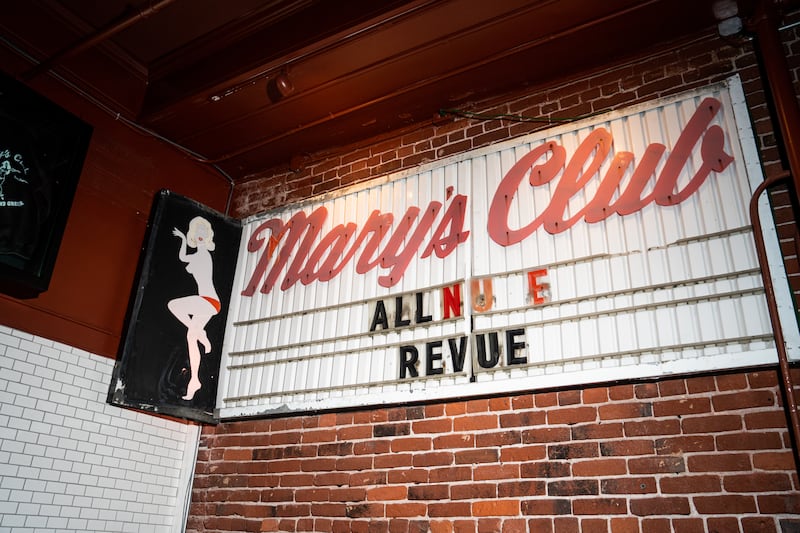
NUNM: National University of Natural Medicine, the oldest accredited naturopathic medical university in North America. Established in 1956 and housed in a historic brick school building at the west end of the Ross Island Bridge.
Oaks Park: Sellwood amusement park founded in 1905 and one of the oldest continuously operating amusement parks in the U.S. Hosts a big fireworks viewing party on the Fourth of July. The hangar is home to the Rose City Rollers, Portland’s four-time world champion roller derby league.
Pill Hill: Nickname for Oregon Health & Science University, the hospital and campus connected to South Portland via an aerial tram built in 2006.
pizza: (see here)
Portland Spirit: (see here)
Queen’s Coronation: Before the Grand Floral Parade, the Portland Rose Festival crowns the Queen of Rosaria, the most outstanding high schooler from a court of 15 princesses. At the coronation, the Royal Rosarians (a carefully selected group in white suits and straw boater hats…we know, stay with us) hand her a crown, scepter, cape, bouquet of red roses, and the responsibility of a full year of national and international travel promoting Portland.
Renn Fayre: A three-day springtime party at Reed College where the campus is closed to outsiders so students at the leafy liberal arts school have a safe environment for chemical experimentation. Began as a Renaissance fair in 1968. This year’s theme: “Surrealist Soiree.”
Rimsky-Korsakoffee House: Classical music and ghost-themed coffee and dessert spot in Buckman named after Russian composer Nikolai Rimsky-Korsakov. Mannequin parts dangle from the restroom ceiling, certain tables rotate or rise unannounced, and waiters sometimes ad-lib full songs tableside. Fun place to freak out tourists.
Rip City: One of Portland’s nicknames (along with Stumptown, Rose City, etc.); basketball in origin. Trail Blazers play-by-play announcer Bill Schonely yelled “Rip City! Alright!” during a 1971 game versus the Los Angeles Lakers when point guard Jim Barnett made a long 3-pointer. The late Schonely reportedly didn’t know why he said it, we don’t know why we still use it 53 years later, and yet here we are.

Roseland Theater: Gritty midsize concert venue in Chinatown that welcomes local and national acts to a loud, standing-room crowd. Formerly known as Starry Night. Scene of the 1990 “Starry Night Murder” of employee Tim Moreau by then-owner Larry Hurwitz.
Soapbox Derby: On the third Saturday in August, creative DIY cars zoom down Mount Tabor at speeds of up to 50 mph to rapturous cheering and potential injury. About 40 teams hurtle down the mountain each summer with cars that have paid homage to the likes of Pee-wee Herman, Cup o’ Noodles and the Killer Rabbit of Caerbannog.
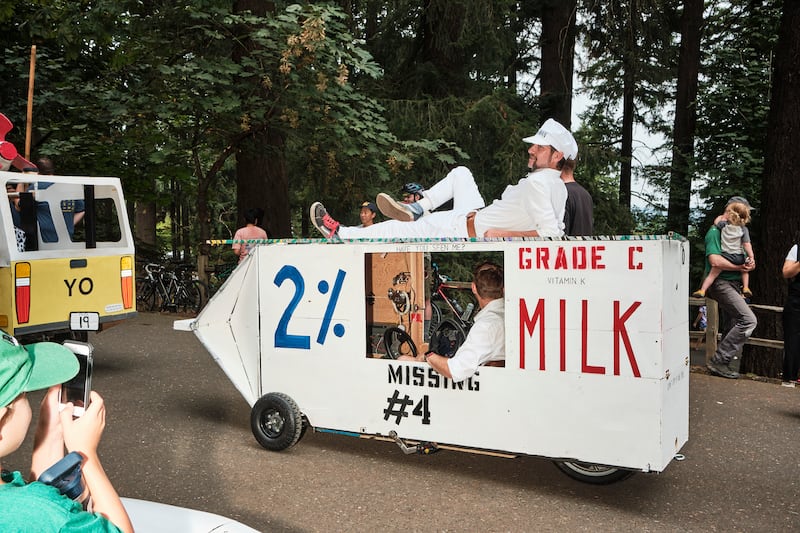
Suicide Bridge: Vista Bridge spans a picturesque canyon through the Southwest Hills and became known for jumpers shortly after its construction in 1926. Protective fences installed in 2013 have been effective, but the bridge may never shake its morbid moniker.
Tom McCall Waterfront Park: The grassy park that runs down the westside bank of the Willamette River downtown, host to many annual events such as the Cinco de Mayo Fiesta, Rose Festival’s CityFair and Waterfront Blues Festival. Completed in 1978 and then fittingly named after Gov. Tom McCall, a pioneering environmentalist politician.
URM: “Unreinforced masonry,” as in a brick building that’s at risk of crumbling in the Big One. Although Portland is in a seismically active area, scientists didn’t fully understand the risk until the 1990s. The city passed a (now repealed) ordinance in 2018 that required URM buildings to post notices that they “may be unsafe in the event of a major earthquake.” Some placards are still visible around town.
Vera Katz Eastbank Esplanade: A 1.5-mile walking and biking path between the Hawthorne and Steel bridges along the east bank of the Willamette River. Construction was completed in 2001, and the path—some of which floats right on top of the water–was named after then-Mayor Vera Katz in 2004 for her support of the project.
Will Vinton: The late Oregon-born clay animation pioneer and founder of Will Vinton Studios, once housed in Willamette Week’s current newsroom on Northwest Quimby Street. Vinton’s creations included 1980s media sensation the California Raisins (dehydrated claymation fruit that sang “I Heard It Through the Grapevine”) and M&Ms as characters with personalities. In the early 2000s, Vinton was fired from his own animation company by Nike’s Phil Knight. That studio went on to become Laika.
Xmas Martini: Every December for the past 40 years (minus three years in the 2010s), a three-story martini glass complete with a skewered olive lights up on a balcony in the West Hills and unofficially signals the holiday season.
YMCA: Under Armour’s West Coast headquarters are in a building that many old Portlanders still think of as the YMCA. The green, rounded 1977 athletic facility on Southwest Barbur Boulevard became Under Armour 40 years later. The track is much nicer now.
zipper merge: The only kind of on-ramp maneuver that famously passive Portland drivers are truly comfortable making. In a zipper merge, two lanes of traffic alternate entering the roadway so there are no hurt feelings. A prime example of a Portland zipper merge in action is during rush hour on the Ross Island Bridge.
Zoo Train: A historic railway at the Oregon Zoo that opened in 1958. The six-minute ride circles on a 20-foot elevated trestle in the forest north of the Elephant Lands. (Old Portlanders scoff at this truncated version of the “real” Zooliner, which made a 2-mile loop through Washington Park until officials stopped it in 2014 due to structural concerns.)
